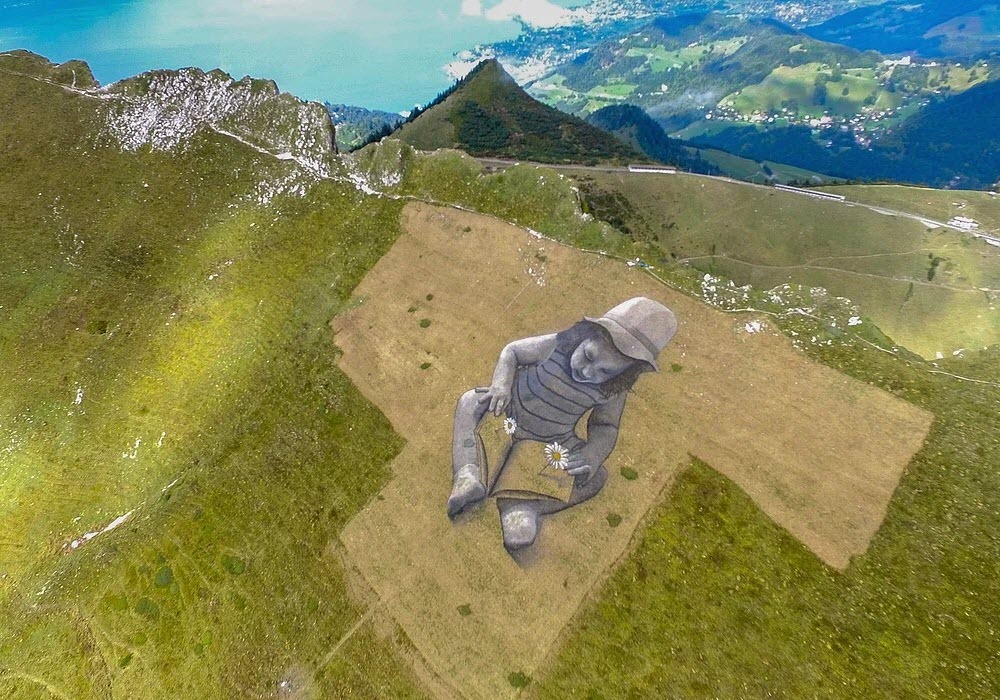Nature's Fleeting Canvas: Exploring Guillaume Legros's Ephemeral Land Art
Definition of Ephemeral Land Art: Ephemeral land art is a form of artistic expression that involves creating temporary installations or sculptures using natural materials found in the environment. Unlike traditional art forms, which are meant to endure, ephemeral land art is intentionally transient, allowing nature to reclaim its components over time. This impermanence becomes an integral part of the artwork, emphasizing the fragility and fleeting nature of life itself.
Guillaume Legros: The Artist: Guillaume Legros, also known as Saype., is a French artist who has gained international acclaim for his breathtaking ephemeral land art installations. Combining elements of painting, sculpture, and performance, Legros creates large-scale artworks on grassy fields, mountainsides, and even city streets. His creations often depict human figures, intertwining themes of unity, connection, and harmony with nature.
The Transient Beauty of Nature: Legros's ephemeral land art celebrates the beauty and temporality of the natural world. By using organic materials such as soil, flowers, and natural pigments, his installations integrate seamlessly with the environment, appearing almost as if they have emerged spontaneously from the earth. The impermanent nature of these artworks underscores the ever-changing cycles of life, encouraging viewers to appreciate the transient beauty that surrounds them.
Creating Dialogue and Connection: One of the remarkable aspects of ephemeral land art is its ability to initiate dialogue and forge connections between people and their surroundings. Legros's large-scale installations often require collaboration with local communities, fostering a sense of ownership and pride in the artwork. As people interact with these temporary creations, they become part of a shared experience, creating memories and forging a deeper connection with the natural world.
Challenging the Notion of Artistic Permanence: Traditional art often seeks permanence through durable materials and preservation efforts. However, ephemeral land art challenges this notion by embracing impermanence as an inherent aspect of its essence. By intentionally allowing his creations to be reclaimed by nature, Legros highlights the transitory nature of human existence, reminding viewers of the impermanence of everything we create.
Environmental Consciousness:
Guillaume Legros's ephemeral land art also raises awareness about environmental issues and the need for sustainable living. By using natural materials in his installations, Legros emphasizes the importance of preserving and respecting the natural world. The temporary nature of his artworks serves as a metaphor for the need to protect and cherish our environment before it, too, becomes a mere memory.
Nature's Fleeting Canvas: Exploring Guillaume Legros's Ephemeral Land Art
Nature's Fleeting Canvas: Exploring Guillaume Legros's Ephemeral Land Art
Nature's Fleeting Canvas: Exploring Guillaume Legros's Ephemeral Land Art
Nature's Fleeting Canvas: Exploring Guillaume Legros's Ephemeral Land Art
Nature's Fleeting Canvas: Exploring Guillaume Legros's Ephemeral Land Art
Nature's Fleeting Canvas: Exploring Guillaume Legros's Ephemeral Land Art
via Weburbanist









No comments:
Post a Comment
Note: only a member of this blog may post a comment.